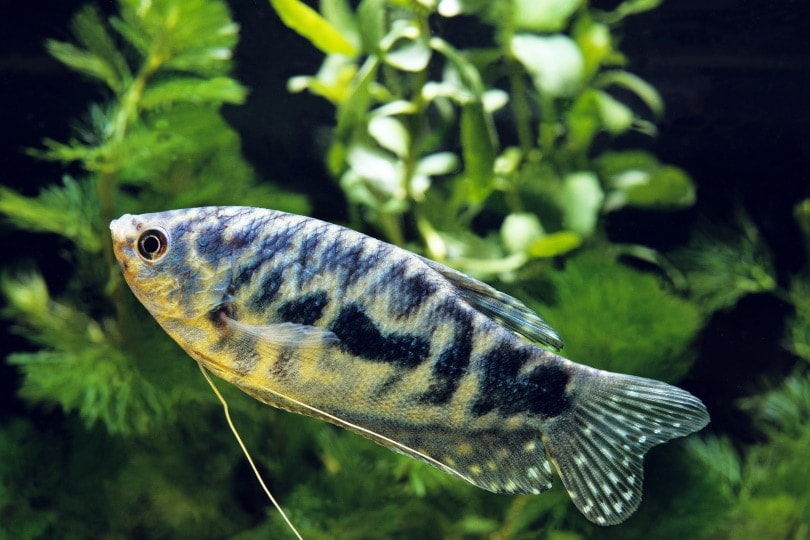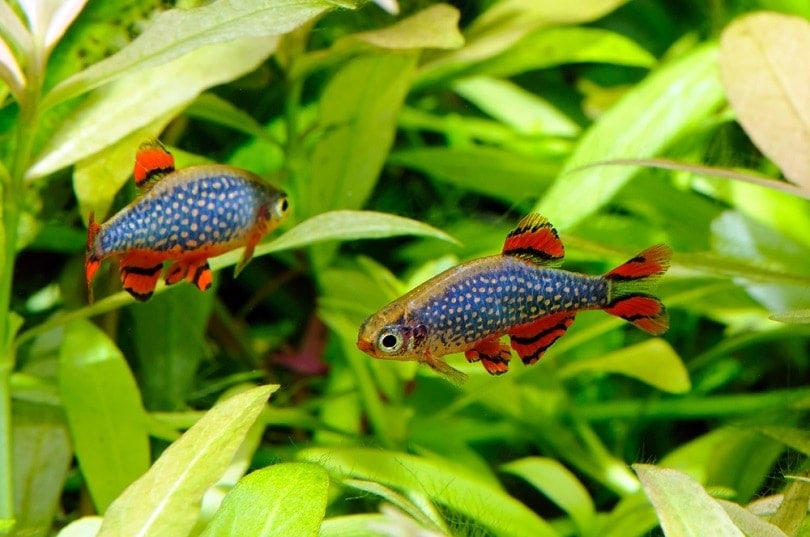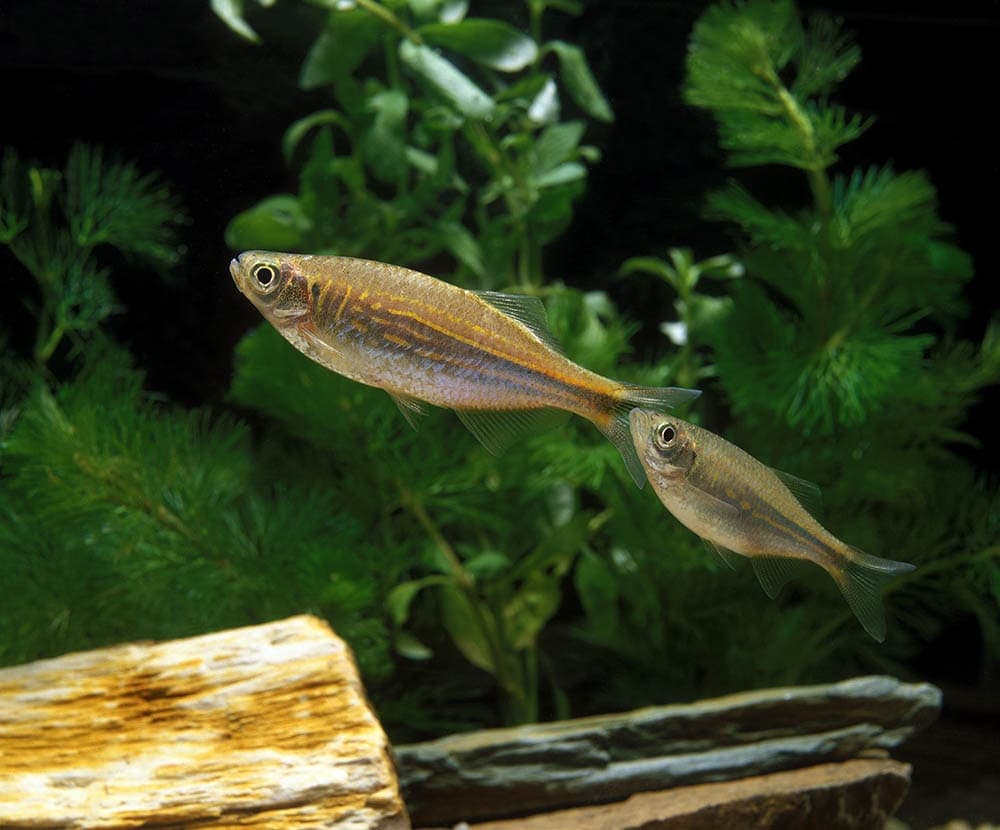16 Exotic Freshwater Fish to Keep at Home (With Pictures)

Updated on
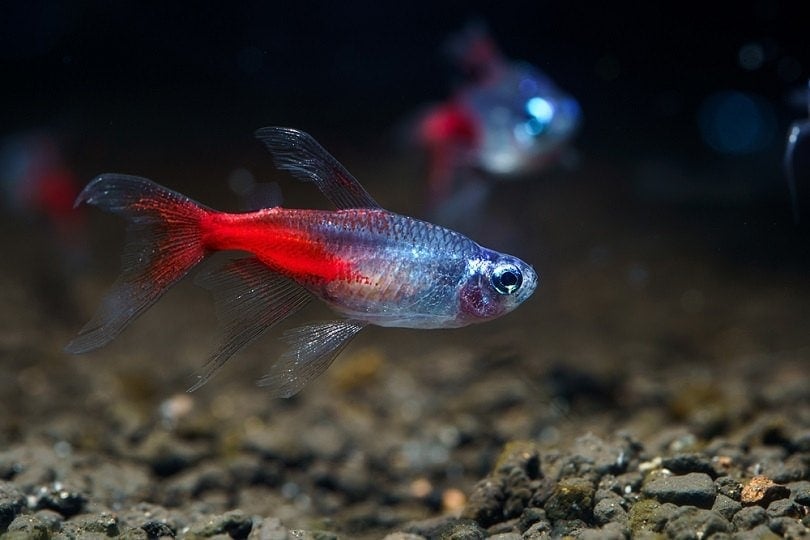
When people use the word “exotic” when speaking about fish, you likely imagine saltwater fish. However, there are all kinds of fascinating freshwater species that require an entirely different type of aquarium and care regime than most freshwater fish.
Exotic freshwater fish typically come from river basins and tributaries in Africa, Asia, and South America.
If you want to find unique freshwater fish for your aquarium, check out this list of 16 exotic freshwater fish species. Pay attention to the care level required before getting too excited about a species.
The 16 Exotic Freshwater Fish to Keep in Your Home Aquarium
1. Wolf Cichlid
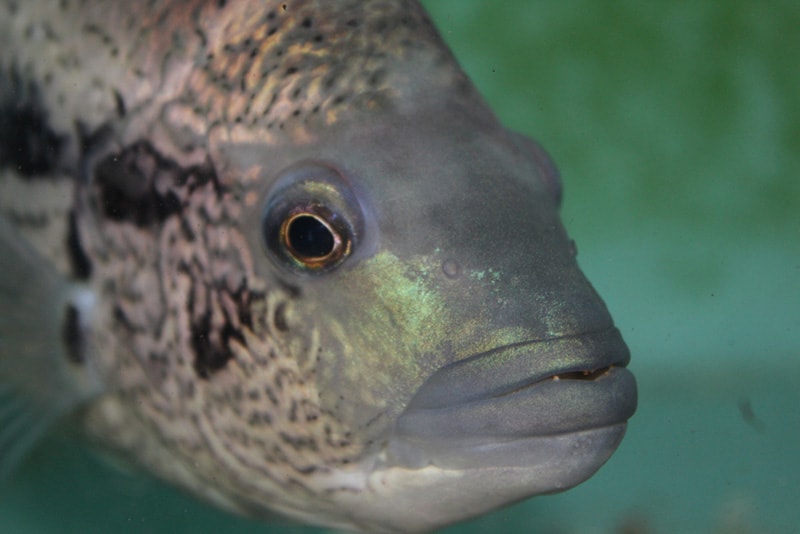
| Size: | 3 inches |
| Lifespan: | 10 to 15+ years |
| Water level: | 75–81°F |
| Care level: | Advanced |
The wolf cichlid is a large and aggressive fish. However, they are incredibly striking fish that attract those with a love for interesting freshwater fish. They can have black, blue, silver and gold, green, or purple speckled scales. They need a tank with at least a 200-gallon capacity and shouldn’t be paired with any other fish species.
A wolf cichlid’s tank is likely to appear quite bare because they are voracious diggers. You will have to work hard or use unique methods to fix anything rooted down into the soil. They will work voraciously to dig up plants, for example. These fish are muscular due to their predatory nature, so they can do quite a bit of damage in short order.
2. Neon Tetra
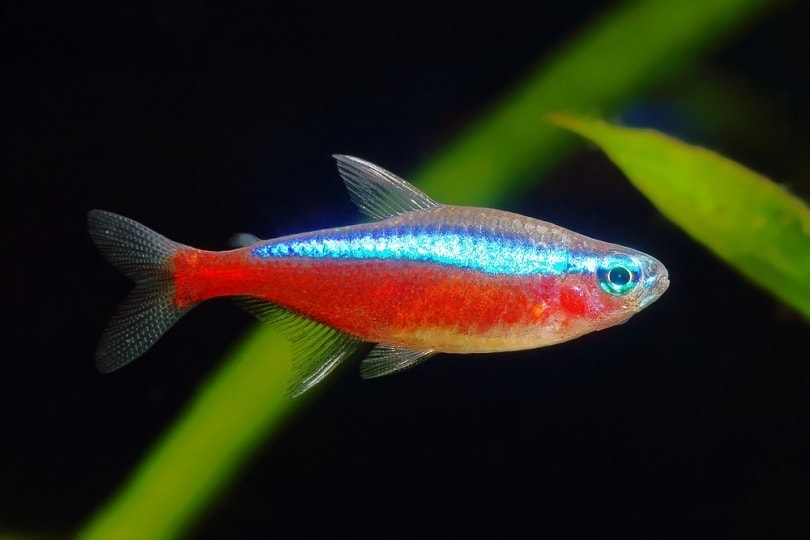
| Size: | 25 inches |
| Lifespan: | 3 to 4 years |
| Water level: | 68–78°F |
| Care level: | Easy |
These little fish glow with an iridescent blue sheen that covers their body, and they have a bright red tail. They do best when kept in schools and are easy to care for once you get their aquatic habitat right.
The neon tetra prefers to live in a heavily planted tank. There should be subdued lighting that reaches inside the waters and plenty of hiding spaces. These fish enjoy peaceful communities with non-aggressive tankmates. They like to weave in and out of their plant matter, slowly exploring their aquatic environment.
3. Crowntail Betta Fish
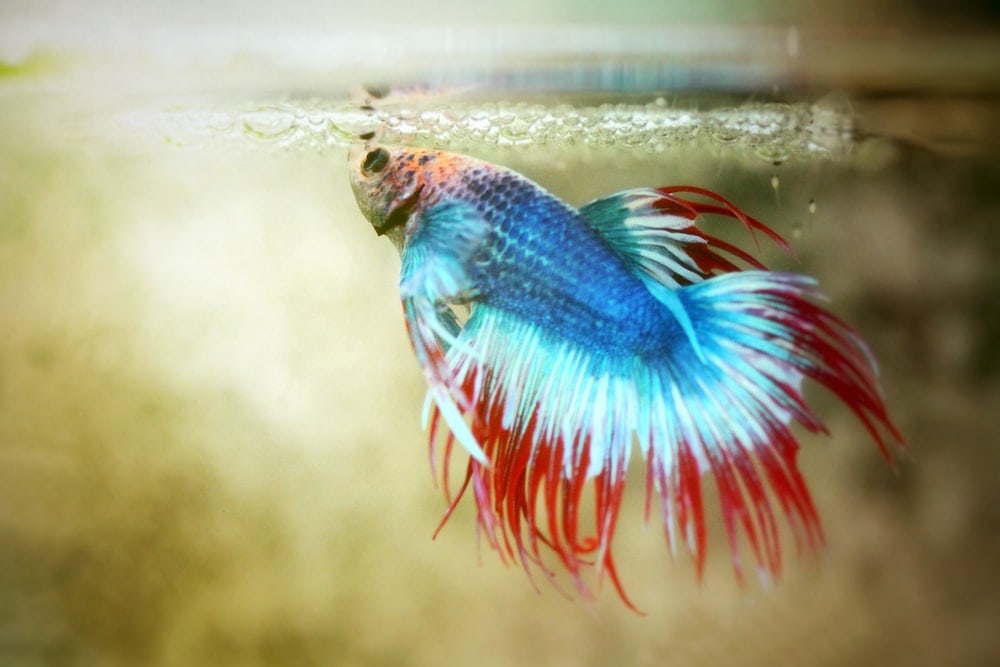
| Size: | 5 inches |
| Lifespan: | 4 years |
| Water level: | 75–86°F |
| Care level: | Easy |
Betta fish have relatively recently become popular for those who like bright, colorful fish.
The issue with any animal that becomes too popular is the abuse of the ecosystem that goes with it. So, when you get these little fish, be sure to buy them from a reputable seller, not just a pet store, where they are typically kept in small plastic containers until someone buys them or they run out of oxygen and die.
Caring for a betta fish is relatively easy. They don’t appreciate temperature fluctuations and require a filtration system to keep their tank clean. Males are also quite aggressive, so you cannot keep two males together.
4. Black Ghost Knifefish
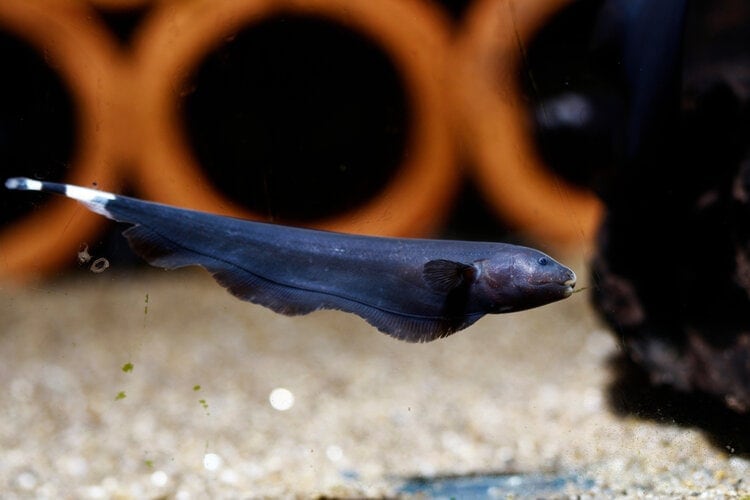
| Size: | 20 inches |
| Lifespan: | 10 to 20 years |
| Water level: | 73–82°F |
| Care level: | Advanced |
These fish are sometimes mistaken for eels because of their shape and color. They are native to the deep, dark waters along South American rivers that move slowly and in the Amazon River Basin. They have adapted to their low-light environments in extraordinary ways. They have no scales, but rather deep black skin and knife-shaped bodies.
Also similar to eels, these fish have developed the capacity to control an electromagnetic field to make it easier for them to navigate in the dark depths. Although they might seem dangerous, especially with a name like “knife fish,” they tend to be relatively peaceful. Due to their lack of scales, you need to be careful with their environment.
5. Golden Wonder Killifish

| Size: | 4 inches |
| Lifespan: | 3 to 4 years |
| Water level: | 72–75°F |
| Care level: | Easy |
The Golden Wonder Killifish lives up to the allure in their name. The main body of the fish is a vibrant golden hue. However, over the top of their body and on their fins, they have bright red spots. These fish are native to freshwater streams, ponds, and marshes across Africa. Although they seem like they should be on a stage, they are associated with ditches.
These fish are carnivores. Their bright blue and yellow bodies set them apart visually from many other fish living in these dirtier areas. They tolerate a wide range of water conditions but will prefer a heavily planted, slightly acidic tank. They also prefer to eat primarily live foods, including brine shrimp and white worms.
6. Honey Gourami
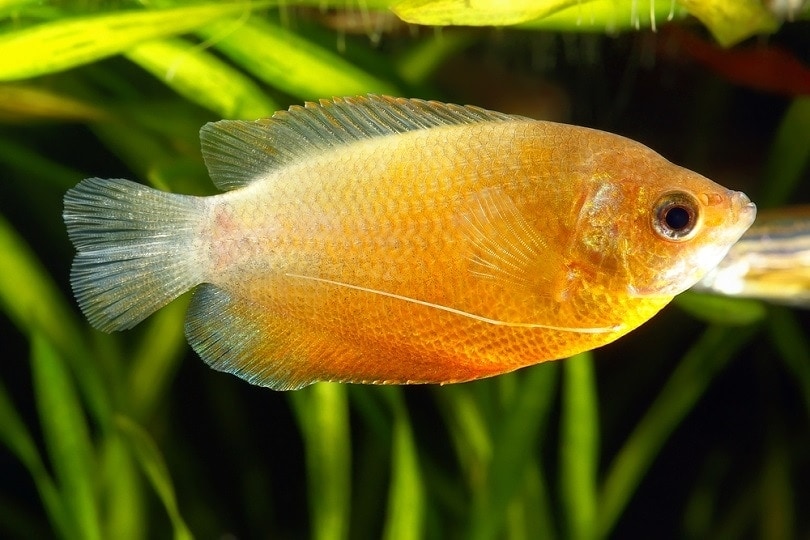
| Size: | 2 inches |
| Lifespan: | 4 to 8 years |
| Water level: | 72–82°F |
| Care level: | Advanced |
The Honey Gourami is a sweet-looking, docile little fish that prefers to live in a peaceful community without aggressive residents. However, do be aware that they can become territorial when they spawn.
These fish are surprisingly difficult to keep healthy. They eat a wide range of food but do not readily adapt to various living conditions. They are labyrinthine fish that like to float through a heavily planted tank.
7. Dwarf Puffer Fish

| Size: | 1 to 2.5 inches |
| Lifespan: | 4 to 5 years |
| Water level: | 77–79°F |
| Care level: | Easy |
The dwarf pufferfish are among the most adorable fish that you can get. They are full of charm and personality, making them unique additions to a freshwater hobby aquarium.
These fish are greenish-brown with yellowed bellies. Part of their visual charm comes from their eyes, which function independently, much like a chameleon’s. They are also relatively easy to care for, as long as there are no traces of ammonia in the water.
8. American Flagfish

| Size: | 5 inches |
| Lifespan: | 2 to 3 years |
| Water level: | 66–72°F |
| Care level: | Easy |
The American Flagfish is a variety of killifish. They help keep your freshwater tank clean by eating algae off the surfaces of the tank. Their beautiful colors only make them more engaging to keep in your freshwater aquarium.
They get their name from their colors. Across their bodies are alternate shades of red and creamy green, with sparkling scales like the stars on the U.S. flag. These fish are happier when they live in communities, and they can even be put in outdoor ponds if there are plenty of plants in that environment.
9. Flowerhorn Cichlid
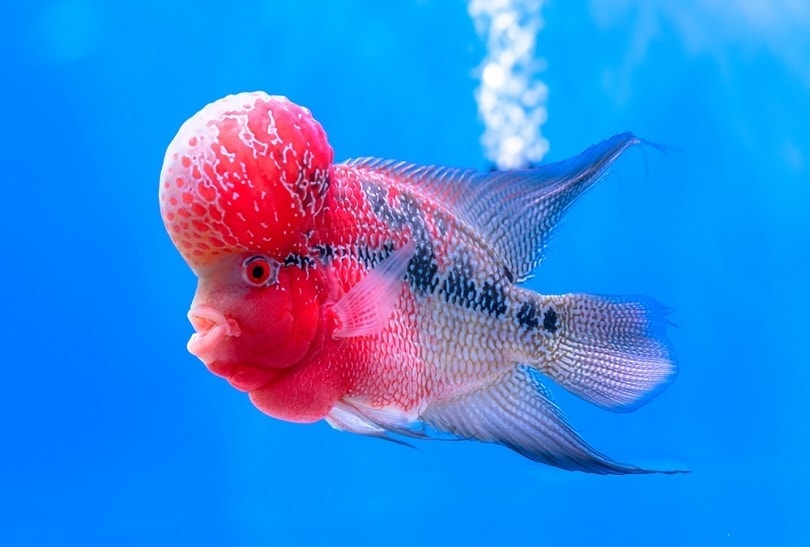
| Size: | 10 inches |
| Lifespan: | 10 to 12 years |
| Water level: | 72–80°F |
| Care level: | Easy |
The flower horn cichlid is quite the fish to behold. They are a large species, so they need tanks that are equally big, at least 50 gallons. They get their name from the bright red lump that grows out of their head.
As with other cichlids, you shouldn’t keep plants in their tank. They can be destructive toward aquarium plants because they enjoy digging them out. So, put them in an aquarium with rocky terrain and soft sand for them to dig in safely.
10. Indian Glassfish

| Size: | 5 inches |
| Lifespan: | 7 to 8 years |
| Water level: | 72–80°F |
| Care level: | Medium |
The Indian Glassfish suits the idea of an exotic fish, right down to their blood vessels. These fish come from forest streams in Myanmar and are almost transparent. That said, they should be relatively easy to care for in a tank with a good setup.
Make sure that these peaceful fish have tanks with excellent filtration systems and plenty of open water. They might eat smaller tetra species, so keep that in mind when pairing various species.
11. Zebra Plecos

| Size: | 5 inches |
| Lifespan: | 9 to 10 years |
| Water level: | 82–86°F |
| Care level: | Easy to moderate |
Many freshwater aquarium hobbyists are familiar with Plecostomus species. These fish are bottom dwellers and move around the tank, eating algae and other growth that can be harmful to other tank dwellers. The zebra plecos are one of the most visually engaging fish in this group.
These are a type of mini catfish. Unfortunately, they aren’t as forgiving as some other species and demand specific tank requirements, such as temperature and water pH. We recommend these fish for more experienced freshwater fish hobbyists.
12. Peacock Gudgeon
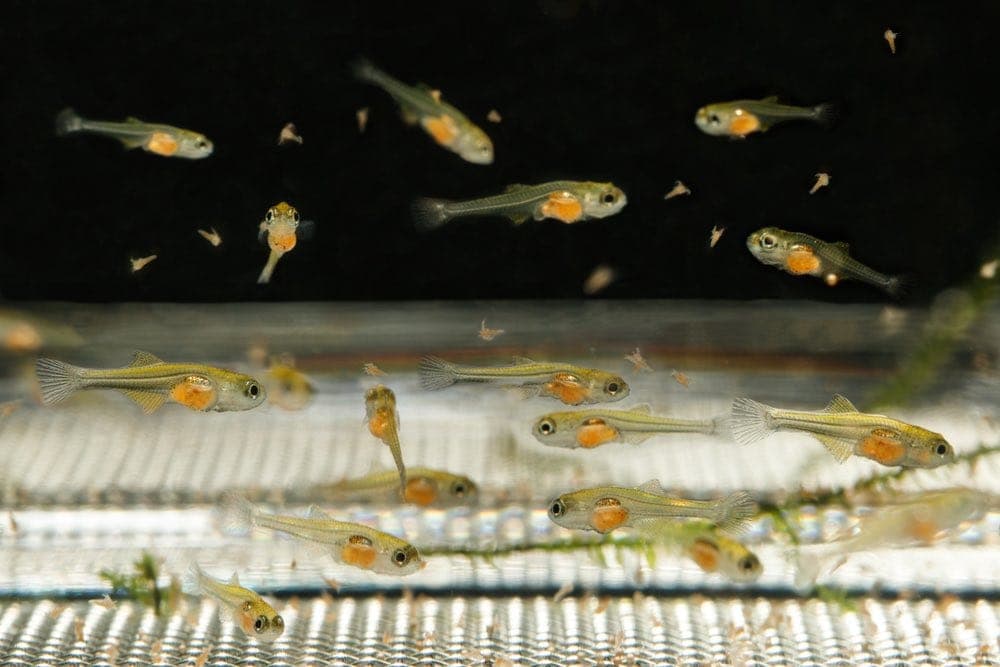
| Size: | 5 inches |
| Lifespan: | 4 to 5 years |
| Water level: | 72–77°F |
| Care level: | Easy |
The peacock gudgeon is a colorful and exotic freshwater fish. They have iridescent red and blue bodies, with red spots and yellow and black stripes on their fins. They are small and will breed quickly if that is something that you are interested in doing.
These fish are tropical, but that doesn’t mean they prefer saltwater. Instead, they live in the rivers and ponds scattered across Papua New Guinea. These fish are omnivorous and eat quite a varied diet.
13. Checkerboard Discus

| Size: | 10 inches |
| Lifespan: | 3 to 5 years |
| Water level: | 79–86°F |
| Care level: | Moderate |
You might expect the checkerboard discus to look like a round, black-and-white checkboard. Instead, they are more of a riot of color. They prefer shallow and shady habitats with dense covers and plenty of plants. They aren’t too picky with their surroundings but require the water to be acidic, warm, and soft to remain healthy.
These fish might seem peaceful but they are carnivorous. You can put them in communities with larger fish without worrying too much, but they will do best in a same-species setup, where they can pair off naturally.
14. Bristlenose Plecostomus
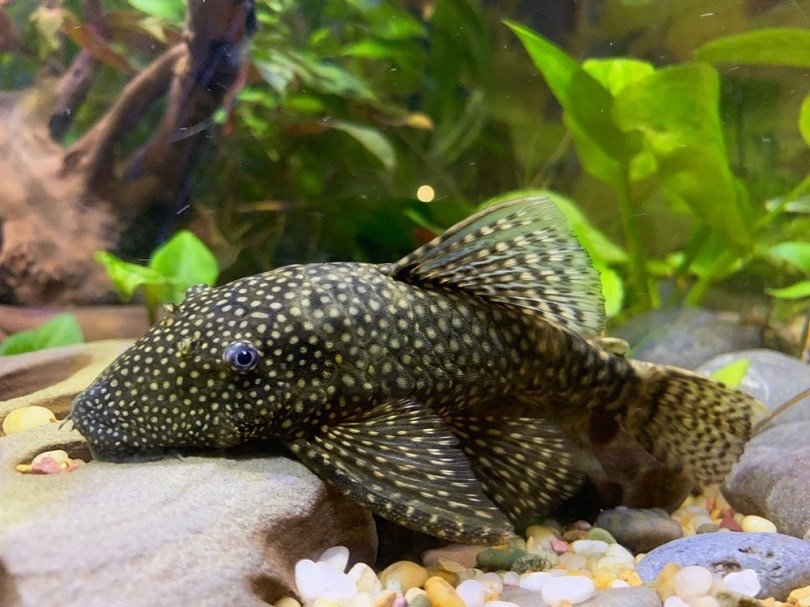
| Size: | 5 inches |
| Lifespan: | 5 years |
| Water level: | 74–79°F |
| Care level: | Easy |
These are large plecostomus fish. They have incredible camouflage over their scales, making them look like they are one with the rocky bottoms that they feed off of. These fish are a species of freshwater catfish that can lend a quirky feeling to the community in your tank. They come in various colors and patterns, from black to albino.
Although the plecostomus is not a fussy eater, they need a highly oxygenated tank with an efficient filtration system and plenty of water movement. It is also best to give them plenty of hiding places.
15. Freshwater African Butterflyfish

| Size: | 1 inch |
| Lifespan: | 5 to 7 years |
| Water level: | 77–86°F |
| Care level: | Medium |
Besides their incredible colors, these fish have an exotic body shape. They are one of the oldest fish species still living, with a morphology that has remained practically unchanged for more than 100 million years.
From almost any view, these exotic fish resemble butterflies. They have long flowing fins that make them look like they have dark brown wings flowing outward. They also eat insects. They have an upturned, “frowning” mouth to help them catch insects from the top of the water.
16. Powder Blue Dwarf Gourami
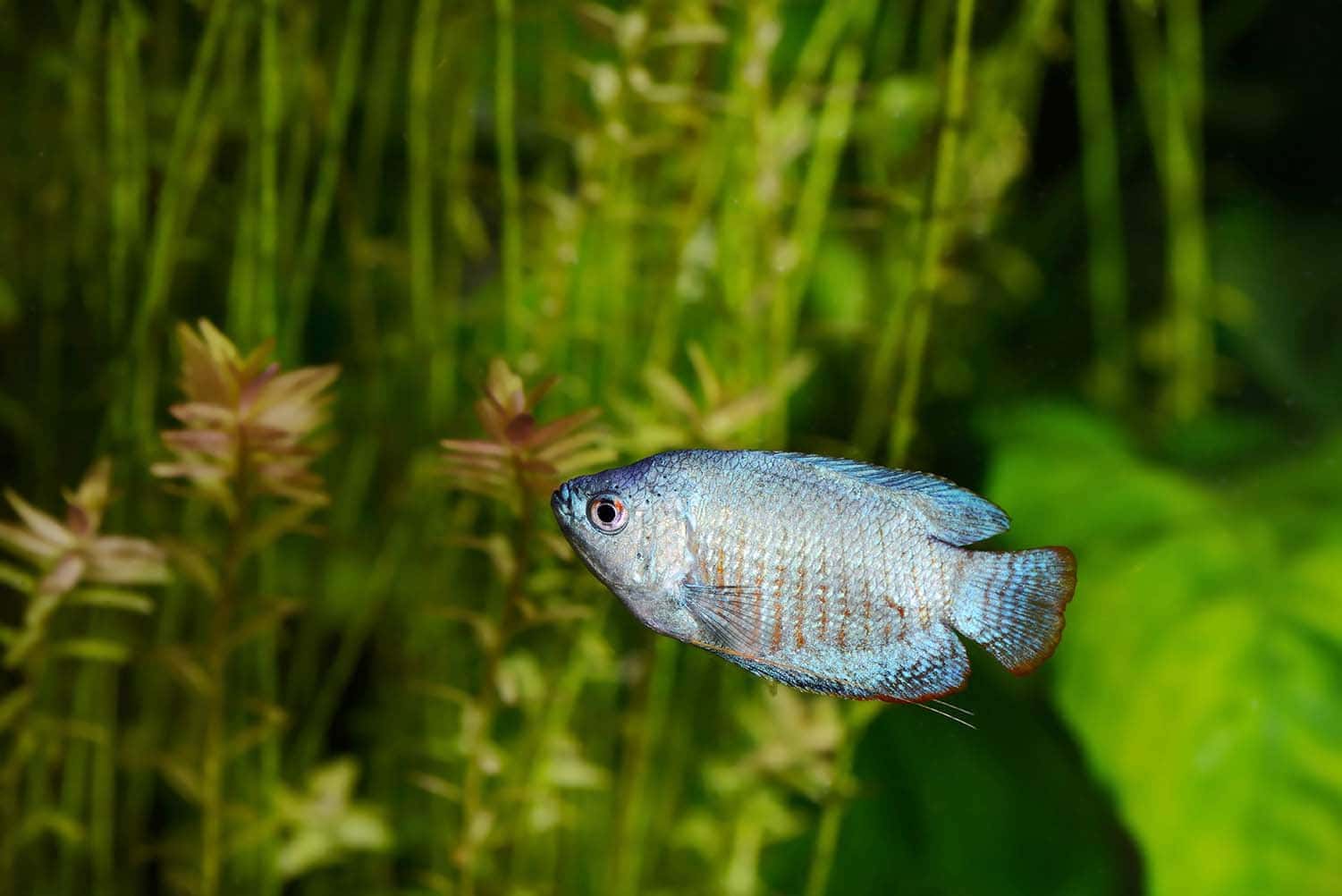
| Size: | 5 inches |
| Lifespan: | 4 to 6 years |
| Water level: | 72–82°F |
| Care level: | Easy |
The powder blue dwarf gourami is stunning, with a body so brightly blue it seems to glow with its own light. However, these fish need a clean tank and a highly efficient filtration system because they can become quite stressed when they live in filth.
Conclusion
And there you have it! 16 exotic freshwater fish you can keep today. Saltwater fish usually get all the attention when the word “exotic” is brought up, but there are tons of gorgeous freshwater fish available too. From expert fish keepers to novices, there’s hopefully something on this list to inspire every fish enthusiast.
Featured Image Credit: chonlasub woravichan, Shutterstock


